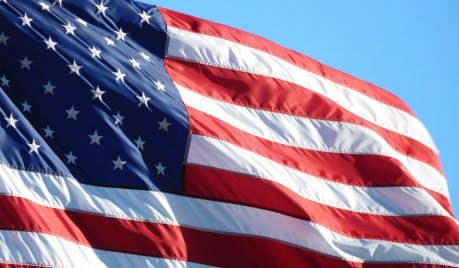
They risked everything for it, not for some idea or abstraction but for the piece of fabric itself.
The American flag’s place in our culture is beginning to look less unassailable.
The symbol itself is under attack, as we’ve seen with Nike dumping a shoe design featuring an early American flag, Megan Rapinoe defending her national-anthem protests (she says she will never sing the song again), and protesters storming an ICE facility in Aurora, Colo., and replacing the U.S. flag with a Mexican flag.
U.S. soccer had a pretty good statement a while back setting out, in response to Rapinoe, why it has an expectation that players will stand during the national anthem (which, of course, is all about the flag):
Representing your country is a privilege and honor for any player or coach that is associated with U.S. Soccer’s National Team. Therefore, our national anthem has particular significance for U.S. Soccer. In front of national and often global audiences, the playing of our national anthem is an opportunity for our Men’s and Women’s National Team players and coaches to reflect upon the liberties and freedom we all appreciate in this country.
(Rapinoe called the sentiment “cowardly.”)
The U.S. soccer statement could have added that men have fought for the flag, and not just in the sense of fighting under it as members of the U.S. armed services. Our troops have literally fought for the flag, for its physical advance and preservation. This is the story of color sergeants during the Civil War.
Color sergeants carried the flag —typically, both the U.S. flag and the regimental flag — into battle, and not a weapon. They depended for protection on the color guard, a small contingent of troops dedicated to the task. The flag, held aloft and leading the way, was important as a matter of tactics (to mark the location of the unit in the confusion of battle), of morale (to provide a rallying point for the troops), and of devotion and honor (to lose the flag to the enemy was a deep disgrace).
(snip)
The commander of the the Sixth Wisconsin Infantry Regiment, Lieutenant Colonel Rufus Dawes described his unit’s charge at Gettysburg:
Any correct picture of this charge would represent a V-shaped crowd of men with the colors at the advance point, moving firmly and hurriedly forward, while the whole field behind is streaming with men who had been shot, and who are struggling to the rear or sinking in death upon the ground. The only commands I gave, as we advanced, were, “Align on the colors! Close up on that color! Close up on that color!” The regiment was being broken up so that this order alone could hold the body together. Meanwhile the colors were down upon the ground several times, but were raised at once by the heroes of the color guard. Not one of the guard escaped, every man being killed or wounded.
Corcoran notes of the inception of the Medal of Honor during the Civil War: “Nearly one thousand of the medals were awarded and, in a great many cases, they were bestowed upon men who had carried the Stars and Stripes into battle or who captured Confederate flags.”
Consider a few examples. There’s John Gregory Bishop Adams, awarded the Medal of Honor for his conduct with the 19th Massachusetts Infantry at Fredericksburg. As the citation recounted, he “seized the 2 colors from the hands of a corporal and a lieutenant as they fell mortally wounded, and with a color in each hand advanced across the field to a point where the regiment was reformed on those colors.”
There’s John Gilmore, awarded the Medal ofHonor “for extraordinary heroism on 3 May 1863, while serving with 16th New York Infantry, in action at Salem Heights, Fredericksburg, Virginia. Major Gilmore seized the colors of his regiment and gallantly rallied his men under a very severe fire.”
There’s William Carney, the first black serviceman to perform an act deemed worthy of the Medal of Honor, who saved the flag during the doomed but valorous assault on Fort Wagner in South Carolina.
Part of the famous Fifty-Fourth Massachusetts Colored Regiment, the exploits of which were depicted in the movie Glory, Carney saved the flag when the unit’s flag-bearer was wounded and, despite getting shot up himself, kept it aloft. He supposedly said when he finally turned the flag over to his comrades, “Boys, I only did my duty; the old flag never touched the ground!”
There are countless such stories of men risking everything, not for the idea of the flag or any abstraction but for the actual piece of fabric itself.
Ancient history, you say? Regardless, the sacrifice and blood of these men are inextricably caught up in the meaning and moral status of the American flag. The historical illiteracy of those who protest it is perhaps understandable and on some level forgivable; their rank ingratitude and disrespect are not.
*see full story by The National Review